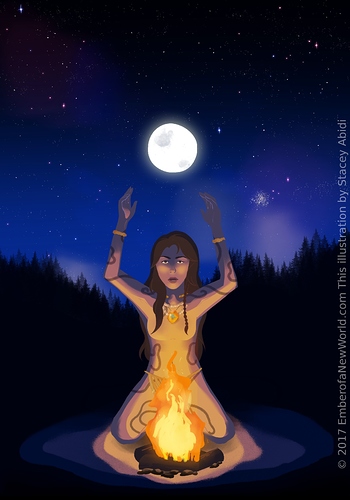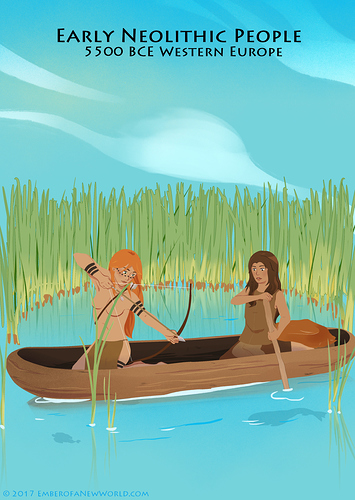There is no way for us to know what clothing and decorations Neolithic people used to any great detail. Neolithic people left behind figurines, pottery and other works which could give a hint of their aesthetic interests and even clothing. The problem we must consider are that these figurines typically, at least it is generally believed, represent ritualistic subjects. We cannot directly infer that everything we see on the figure is indicative of daily life. For example, figures are almost always nude, nudity being associated with religion quite deeply (not to be confused with sexual association, though we cannot preclude the possibility that some of that existed as well), though it would be an error to assume that Neolithic people walked around nude not only because this is very rarely observed in any culture (yes there are a few African the Amazon native groups that do this still) but it would also be preclusive in the colder northern hemisphere.
While we cannot directly determine what was worn, what decorations people wore in other parts of their lives merely by looking at their figurines, we can certainly use the knowledge of what tools they had, what materials they had, their pragmatic needs and use the artwork as a basis for a sort of inspirational re-creation of what their clothing might have looked like.
Justification: This is mostly to do with clothing, but it also involves jewelry, hairstyles and other practices which are touched on in different threads. The said specifically deals with figurines and other artifacts from which information about Neolithic cultures can be gleaned, with respect to aesthetics. That is why this thread is slightly different.
What we know:
- The materials available (wool, leather, bast fibers, shells, paints, etc)
- Pragmatic needs (what the environment require or even prevented. e.g. no wool coat in the summer Levant)
- Their artwork (Left on pottery, figurines, and several other sources. This gives us an idea of their aesthetic interest)
https://www.pinterest.com/pin/467670742539081253/
This is a pretty good example of what I’m referring to. This artist has reconstructed a possible athletic for a culture using figurines from that culture. I’m not sure I agree with every part of this, but I believe this example well illustrates what I mean.
I intend to start posting figurines, mentioning their culture and time period, and what I think can be gleaned from each of them. I invite each of you to propose alternate hypotheses. I should start out by saying that I will not reply to any hypotheses that are creepier weird unless the logical basis behind them is well backed by peer-reviewed research.




